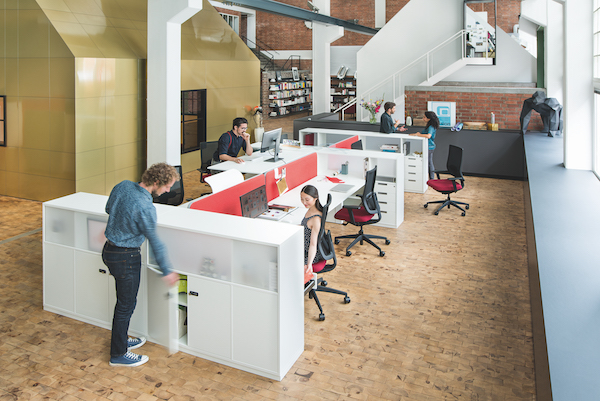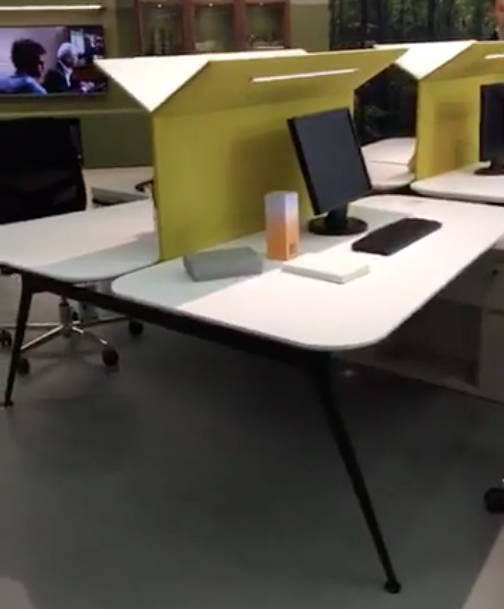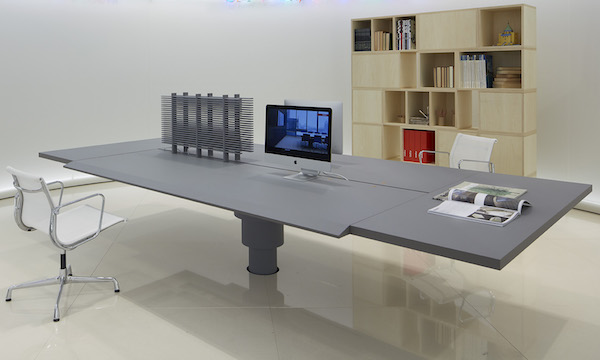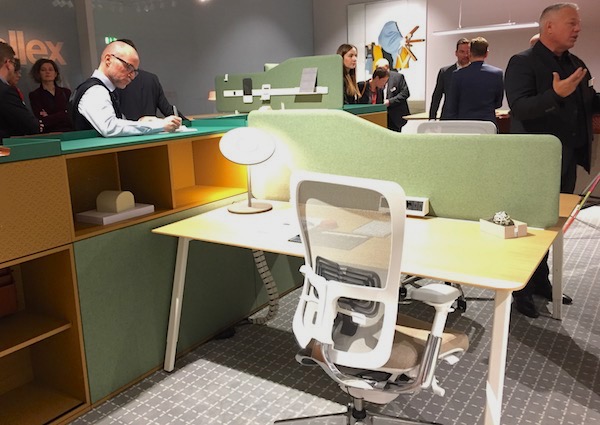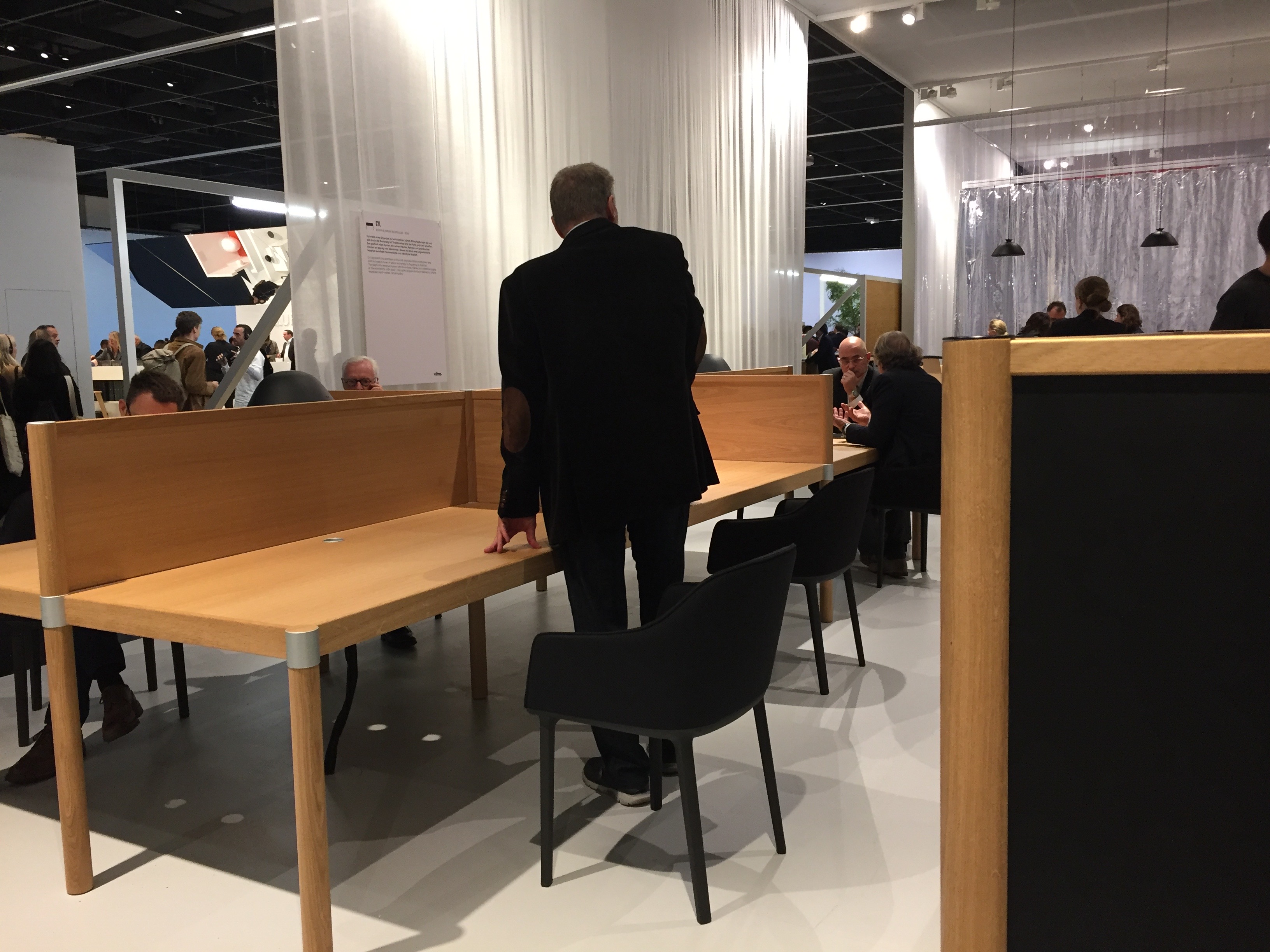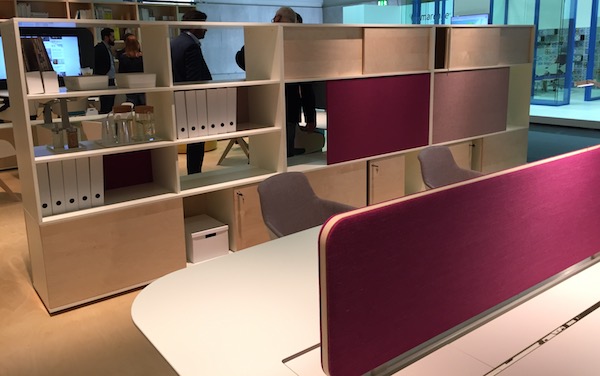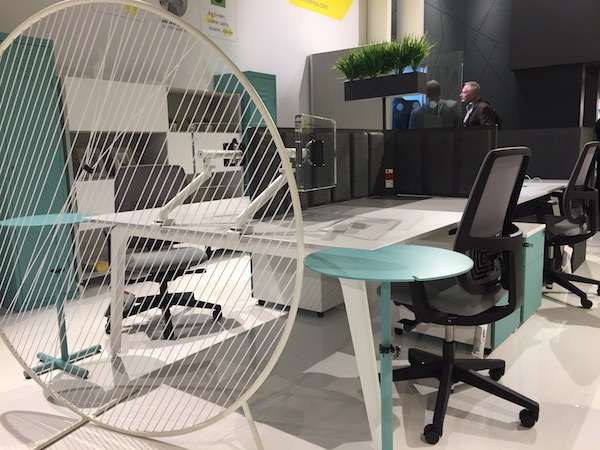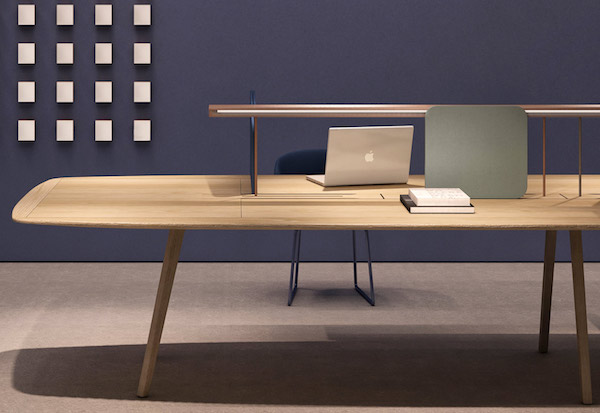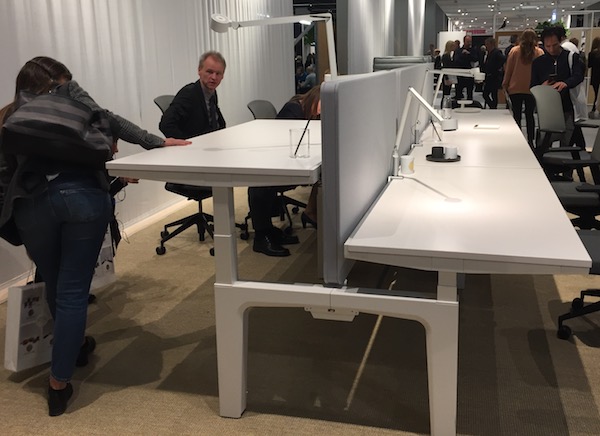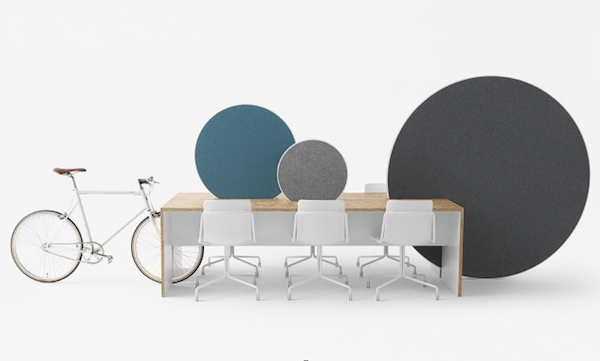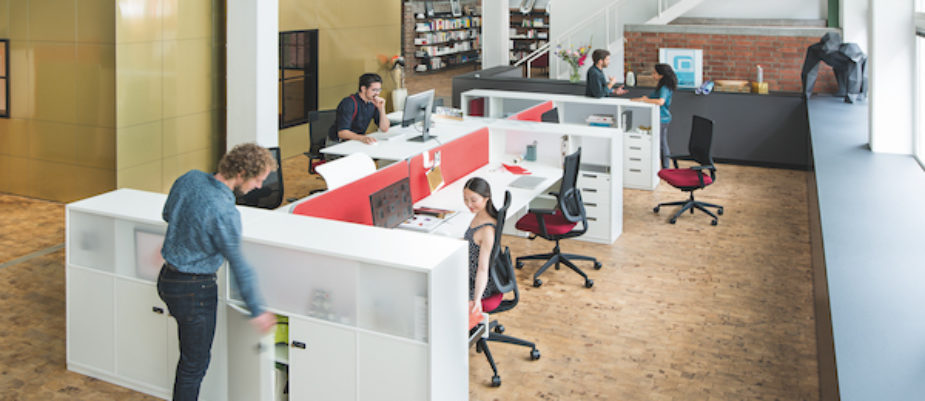
The desk systems launched at Orgatec 2016 allow to bring people together around a table or separate them with small screens; they are ergonomic and very often height-adjustable for sit-stand work.
The storage systems become interior design elements: useful modular dividers in open plan offices. High customization and space saving are the common elements to the desking and storage system selected by WOW!
Sedus, Grand Slam + se-Wall.
Clever combinations of desks, storage system, screens and transparent elements, to create a functional storage and working area in open-plan landscapes. The multifunctional elements can be configured as required with a wide range of flexible options, which can also be expanded into corporate communication areas.
Estel, I Pianeti.
This desking system removes the classical rigidity of the office. It is constructed along a horizontal along a central point of sequenced containers that supports cabling functions for the desks, interspersed with sound-absorbing wall partitions.
Unifor, Teamer, design by Michele De Lucchi + Cases, design by Jean Nouvel.
Configuration of four facing workstations with ends fixed and designed to accommodate brief informal meetings. It is supported by a central steel column that taper down from below the table to the base plate fixed below the raised flooring. A freely composed group of Cases modular containers and open storage elements in natural wood provides the workstations with filing and storage space.
Haworth, Be_Hold.
A storage system to support different work styles – from highly collaborative to focused – while leveraging design elements(perforated metal, colors, fabric element, lockers, sliding cabinets…) create functional workspaces with an individual personality.
Vitra, Cyl, design by Ronan & Erwan Bouroullec.
The Cyl system encompasses a variety of different sized tables. Solid wood emphasises the clean lines of the system with its smooth planes, structural frame and cylindrical elements. As an intentionally ‘analogue’ system, Cyl dispenses with integrated power solutions. “It was originally conceived for the home… I think the simplicity of Cyl responds to a demand for clarity and fosters a welcoming atmosphere in the office world”, explains Ronan Bouroullec.
Sinetica, Stay, design by Paolo Mantero + Use Me.
A complete abacus of modular surfaces with nicely rounded shapes to create endless compositions, stand alone or integrated, with cabinets and libraries from the Use Me collection. The table in all its functions and forms, from the operative office to managerial, from the meeting room to collaborative environments. Wood and fabric suggest residential and contract situations.
Ersa, Edge, design by Claudio Bellini.
In addition to the different leg design, the metal construction of the system and the recyclable felt-covered partitions also make the system stand apart with its style, function and acoustic capabilities. It can be fitted with cabling, planters and lighting.
True, Wing, design Parisotto + Formenton.
The table was born for workspaces, but is also suitable for home-office and residential. The light structure, is inspired by the work tables stands, the top has rounded “soap bar” shapes.
Vitra, CDS, design by Antonio Citterio.
A desk system with an industrial aesthetic. it is available in a variety of configurations and models, including the sit-stand one. Structural sophistication and logistical efficiency are the plus.
Kokuyo, Rolling Workspace, design by Nendo.
.Circular whiteboards can be freely rolled around in the workplace and leaned against the wall. Desks, benches, and high counters that match these circular whiteboards were also designed with slits cut into them, enabling combinations with large and small boards.

